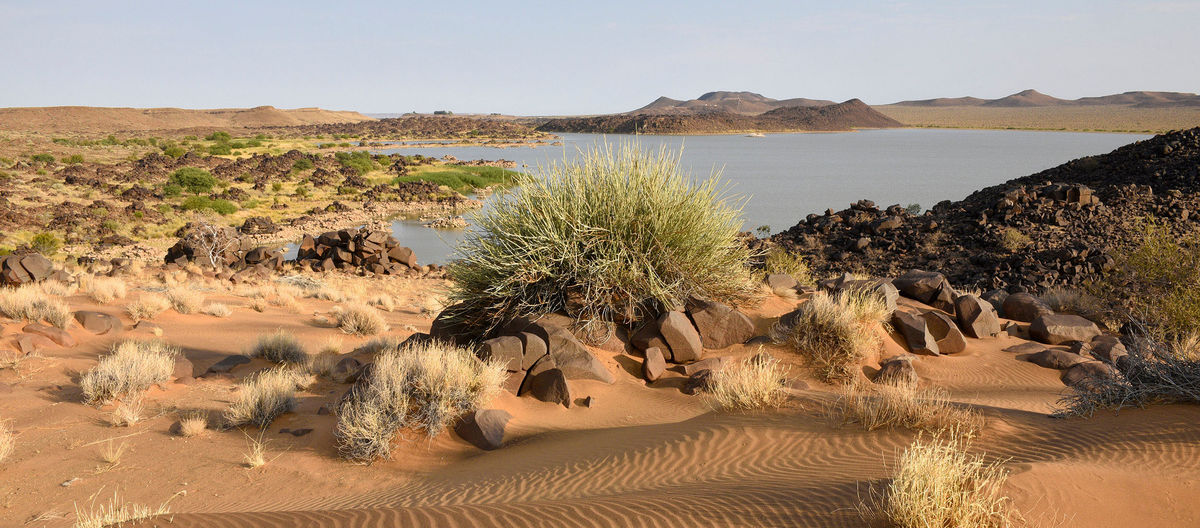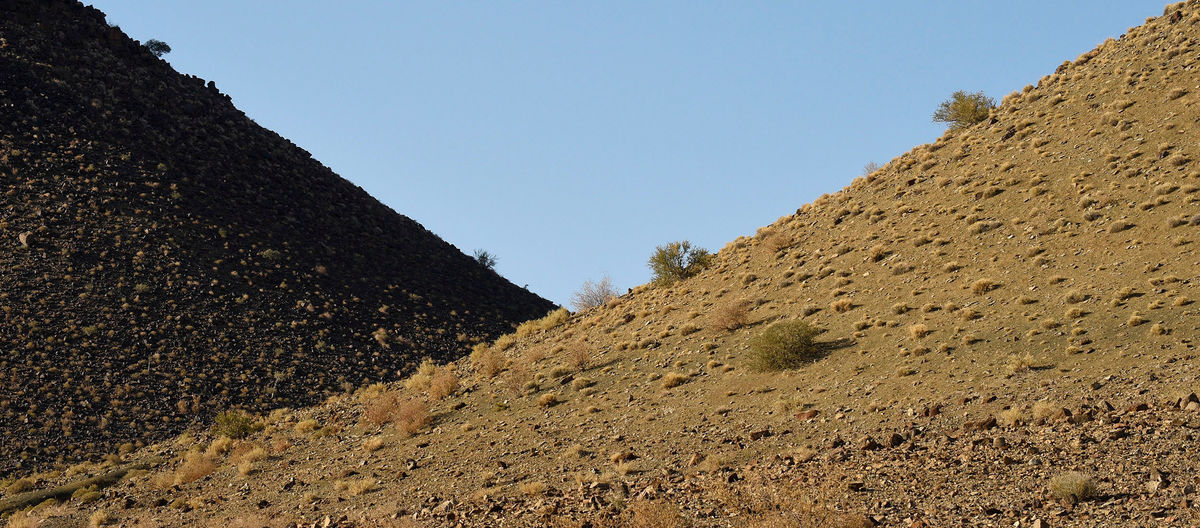Gondwana Canyon Park
In a way it’s refreshing when a wonderful little sanctuary remains beyond our hunger for leisure destinations. While Naute’s tourism potential remains unrealised, the game park does fulfil its conservation function.


In a way it’s refreshing when a wonderful little sanctuary remains beyond our hunger for leisure destinations. While Naute’s tourism potential remains unrealised, the game park does fulfil its conservation function. It protects attractive Nama Karoo landscapes and a variety of wildlife and desert flora. It’s a characteristic sample of Namibia’s arid southern reaches, diversified by the large waterbody. Those who have access to the park through their work are privileged.
Naute is one of Namibia’s largest man-made lakes. Its shoreline, abutting long stretches of rocky plains and intricate sections of small bays, is very attractive The dam location on the Löwen River was already identified by German engineers over a century ago, yet construction of the reservoir only took place 70 years later. The dam was created as a reliable source of water for the nearby town of Keetmanshoop, and to enable an agricultural scheme adjacent to the reservoir.
The lake creates an ideal focal point for a game park, although this was only proclaimed just prior to independence. Thirty years on, its tourism potential remains untapped, overlooked in the vastness of the ‘forgotten South’. Discussions around a tourism concession with the neighbouring !Gawachab Conservancy may gain momentum in the future. For now, Naute is still worth a brief stop-over visit while travelling between Keetmanshoop and the Fish River Canyon.
WHEN TO BE THERE:
- Visitor access is restricted to the recreation area; this is open all year
- Day temperatures can be very hot during summer
- Fishing competitions are held intermittently & the recreation area is a weekend retreat for locals
- The game park is currently not open to visitors
WHAT TO DO:
- Stop at the lake for a refreshing break on your travels
- Enjoy a short walk & some good birding
- Do a spot fishing along the shore
- Visit the nearby agricultural scheme
WHAT TO REMEMBER:
- Access is restricted to the small recreation area
- A permit is required for fishing, obtainable at the Karas Regional Council in Keetmanshoop
- There are no amenities at the dam
- Do not litter, take all rubbish with you
History
Those interested in geology will find ample opportunity for exploration, not only at the Fish River Canyon but also among the numerous rock formations of Gondwana Canyon Park. Ancient dolerite hilltops testify to the disintegration of the primeval continent of Rodinia 750 million years ago, while massive layers of sandstone and limestone reveal that 600 million years ago this area was covered by a shallow sea.
But the more recent history, characterised by man, is highly fascinating as well. Rock engravings in the canyon depict mysteriously looking figures. Most probably they were done by ancestors of the San (Bushmen). Much later the area of Gondwana Canyon Park became part of the domain of the Bondelswart Nama who came to settle north of the Gariep/Orange River and established their headquarters in Warmbad. After they had lost the war (1904 – 1908) against the German colonial forces the land was divided into farms and given to German settlers. This was the time when two brothers from Bavaria built the house which today serves as the reception and restaurant of Canyon Lodge. Both men - together with thousands of their German compatriots - were deported by the country’s new South African rulers after the First World War, in 1919. During the next decades the land at the canyon was used for farming with cattle, sheep and goats.
When Namibia gained independence in 1990, tourism started to increase. From 1995 onwards, farms east of southern Namibia’s main attraction, the Fish River Canyon, were gradually purchased by a group of businessmen with a love for the country’s south. Livestock farming was discontinued, internal fences were dismantled, watering places suitable for game were set up and game which had once been indigenous to the area was reintroduced. Nature conservation efforts are financed with the income derived from the hospitality business, for which less than 5 percent of the park’s area is used. Furthermore, Gondwana Canyon Park is the source of a regular income for its employees, and holds out future prospects to them.
Furthermore, the Gondwana Canyon Park forms part of Greater Fish River Canyon Landscape initiative, which strives to establish a unique natural landscape by removing all fences. This area extends from the Sperrgebiet in the west to the Klein Karas Mountains in the east, and from the tar road between Keetmanshoop and Aus as its northern borderline down to the Orange River in the south – and even further, far beyond the South African border, because there the huge park meets the Richtersveld. This initiative enables game to regain a large part of the mobility which allowed them to respond to annual and local fluctuations in the arid Nama and Succulent Karoo’s grazing conditions before the arrival of settlers in the area more than a decade ago.
Activities
Conservations
Map
-27.52417 17.81472
Klein Windhoek

